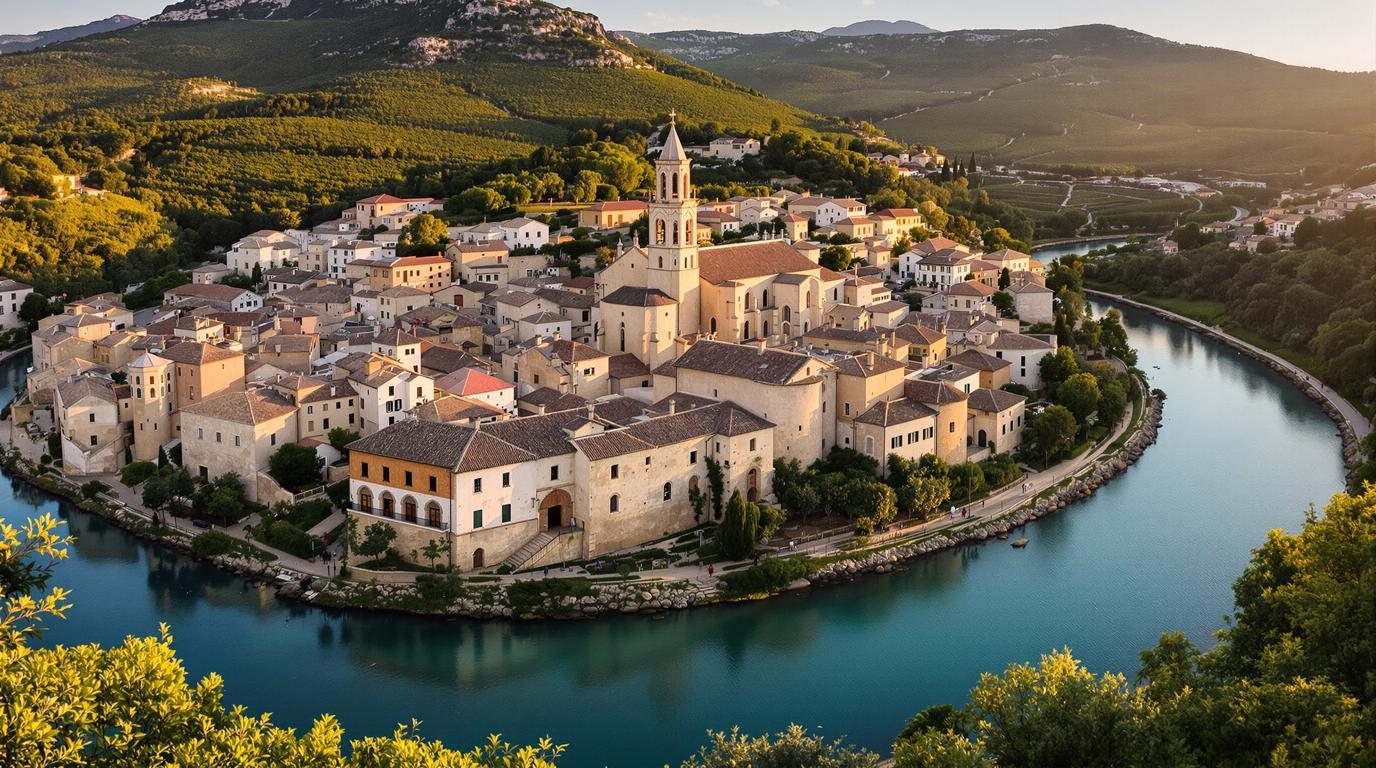Hidden in France’s sun-drenched Pyrénées-Orientales region lies the enchanting village of Ortaffa, a place where time seems to slow down and authentic French-Catalan culture thrives. Just 15 minutes from bustling Perpignan yet worlds away in spirit, this medieval gem with barely 1,300 residents offers travelers a rare glimpse into traditional southern French life that remains refreshingly untouched by mass tourism.
A village trapped in time
Walking Ortaffa’s narrow cobblestone streets feels like stepping through a portal to medieval France. The village’s ancient limestone buildings, weathered by centuries of Mediterranean sun, tell stories of a past dating back to Roman times. Unlike its famous coastal neighbors, Ortaffa maintains an authenticity that makes it a treasure for travelers seeking the real Roussillon experience.
The ecclesiastical jewel most visitors miss
At Ortaffa’s heart stands the Romanesque Ste-Eugénie Church, a spiritual landmark dating to 1145. With its distinctive civil bell tower and austere stone construction, this architectural gem exemplifies the region’s religious heritage. Much like other hidden religious marvels in the region, the church provides a peaceful sanctuary from the outside world.
A crossroads of French and Catalan influences
“Our village embodies the soul of Roussillon,” explains Marie Dupont, local historian. “We’re technically French, but our hearts beat with Catalan rhythms.” This cultural duality manifests in everything from the bilingual street signs to local festivals celebrating both French and Catalan traditions. The proximity to Spain has created a unique cultural blend reminiscent of authentic Catalan villages across the border.
The secret fishing haven on the Tech River
Beyond the village limits, the turquoise waters of the Tech River create a paradise for anglers and nature lovers. Local fishing guide Bernard Moreau reveals, “The early morning mist rising from the river creates a magical atmosphere. Only locals know the best spots for catching rainbow trout.” This peaceful waterway offers a tranquil escape from the region’s crowded beaches.
Vineyards that tell ancient stories
Ortaffa’s surrounding countryside unfolds in a patchwork of vineyards producing distinctive Roussillon wines. The local Béa grape thrives in the mineral-rich soil, creating robust reds that capture the essence of the Mediterranean terroir. Several family-owned domains welcome visitors for tastings in rustic cellars where time stands still.
Where to stay: A château experience
The historic Château d’Ortaffa, once an Episcopal palace, now welcomes guests as an elegant bed and breakfast. Its antique furnishings and panoramic breakfast terrace overlooking the countryside create an ambiance reminiscent of medieval fortress towns while providing modern comforts.
Beyond Ortaffa: Day trips worth taking
Ortaffa’s strategic location makes it perfect for exploring the region’s diverse landscapes. The artistic coastal town of Collioure lies just 20 minutes away, while the dramatic Pyrenees mountains beckon hikers and nature enthusiasts. The varied topography evokes the diversity found in Spain’s miniature continents but on a more intimate scale.
Preserving centuries-old traditions
“In Ortaffa, we still make bread the way our great-grandparents did,” says Pierre Lefebvre, village baker. “Tourism hasn’t changed our way of life.” This dedication to tradition makes Ortaffa a living museum of 12th-century Catalan treasures that continue to thrive in daily village life.
Best time to discover Ortaffa’s charms
Visit during spring (April-May) or fall (September-October) to enjoy mild temperatures and fewer tourists. Summer brings intense Mediterranean heat but also lively village festivals where locals share wine, food, and centuries-old traditions with fortunate visitors who’ve discovered their hidden corner of France.
Ortaffa doesn’t announce itself with grand monuments or tourist offices. Instead, it whispers its secrets to those willing to venture beyond guidebook recommendations. In this unassuming village, travelers discover not just a destination but a way of life—authentic, unhurried, and profoundly connected to the land and traditions that have sustained it for centuries.
